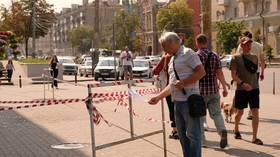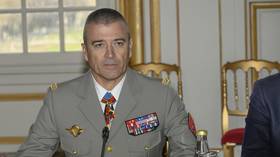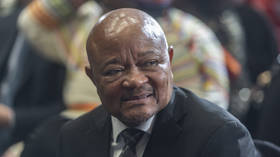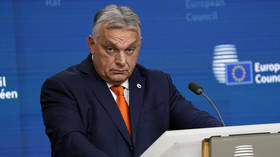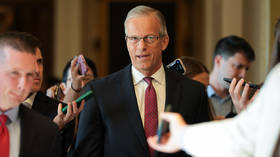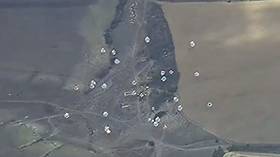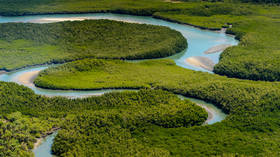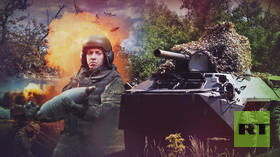Azerbaijan leader raises flag in recaptured majority Armenian exclave
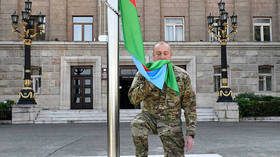
Baku’s conquest of the Nagorno-Karabakh region was finalized on Sunday after Azerbaijan President Ilham Aliyev personally raised the state flag over the region’s capital, Khankendi, known as Stepanakert in Armenia.
The ceremony was held during Aliyev’s first visit to the region since it was taken over by Azerbaijani forces last month, when they launched a surprise “counter-terrorism” offensive that ultimately put an end to several decades of Armenian rule over the breakaway territory.
Following Baku’s military operation and a Russian-mediated ceasefire, Nagorno-Karabakh president Samvel Shahramanyan announced in late September that the republic would no longer exist, and that all state institutions and their branches would be dissolved by the end of the year.
Yerevan has since announced that the vast majority of the 120,000 ethnic Armenians that have been living in the area have fled to Armenia. Those who chose to remain, or are looking to return at a later date, have been encouraged to familiarize themselves with the conditions of reintegration offered by Azerbaijan.
Nagorno-Karabakh split from Azerbaijan in the last days of the USSR, with its predominantly ethnic Armenian population fighting a bloody war for independence in the 1990s which eventually ended in a Russia-brokered ceasefire. Armenia continued to tacitly support the self-proclaimed Nagorno Karabakh government for decades, while the region remained internationally recognized as part of Azerbaijan.
In 2020, Russian peacekeepers were once again sent to the region after yet another flare-up in tensions between Baku and Yerevan, which concluded with Azerbaijan reclaiming a large portion of the territory it had previously lost.
Yerevan ended up formally acknowledging Baku’s sovereignty over the region last year, following a series of border clashes and several rounds of talks between the two neighbors.
Following the dissolution of Nagorno Karabakh and Yerevan’s recognition of Azerbaijan’s sovereignty over the region, Russian President Vladimir Putin stated that Moscow had done “everything it could” for the Armenians, and had promised them a compromise regarding the status of the breakaway region. However, Yerevan chose to “go its own way,” resulting in a mass exodus of people from the area, Putin said.
Azerbaijan has been heavily criticized for taking the region by force. Earlier this month, the European Parliament adopted a resolution calling for sanctions against Baku’s political and military leadership over what MEPs called an “ethnic cleansing” of Armenians living in Nagorno Karabakh.
European officials also demanded that the EU reassess its energy partnership with Baku and suspend all imports of oil and gas from Azerbaijan in the event of “military aggression against Armenian territorial integrity” or the country’s “democratic institutions.”



